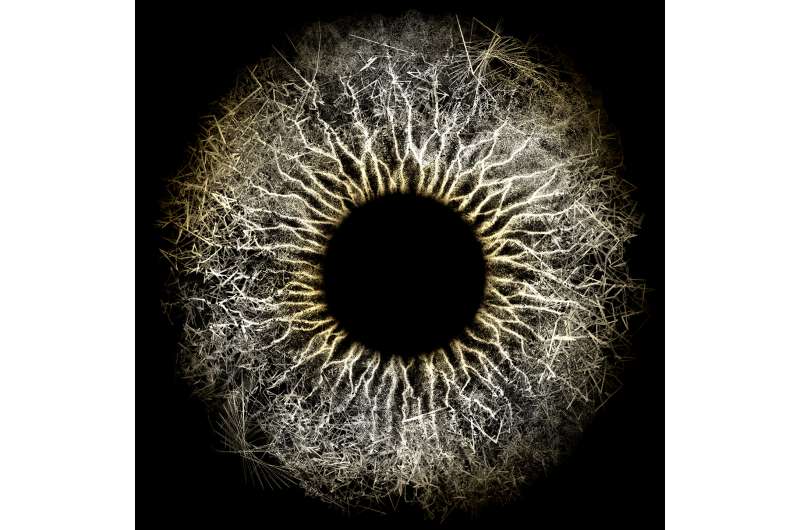The cover image for the Chromos EP by Max Cooper in collaboration with Babraham Institute scientists. Credit: Andy Lomas
An artistic collaboration between musician and sound producer Max Cooper, respected visual artist Andy Lomas and researchers from the Babraham Institute in Cambridge has produced an emotive new way for anyone to experience the elegance and complexity of DNA organisation. The five-track Chromos EP, available from May 26th on digital download, captures the microscopic elegance of gene organisation using moving, evocative soundscapes.
The first two tracks, 'Chromos' and 'Coils of Living Synthesis', are inspired by the work of Dr Csilla Varnai at the Babraham Institute. As part of Dr Peter Fraser's Lab in the Institute's nuclear dynamics research, Dr Varnai is generating computer models that fully recreate how genetic information, recorded on DNA molecules, is organised within living cells. Her research is changing our understanding of biology by revealing how genes that are not close together in the genome interact and influence each other.
We often see DNA inside cells represented as little 'X'-shaped chromosomes arranged in neat little lines, with plenty of space between one chromosome and the next. Yet with more than two metres of DNA crammed into each cell nucleus - a space less than 100th the size of a grain of sand - nothing could be further from the truth. In fact, the 46 chromosomes in a human cell spend most of their time as part of a tangled mass of DNA that most closely resembles a ball of wool.
Whilst this may look chaotic, the genes in a cell are highly organised and work like Dr Varnai's has helped to reveal that the location of a gene inside a cell, as well as its position in space relative to other genes, can drastically change how a gene behaves. This research uses experimental techniques that can reveal which genes are close together in space. Using computers, this information can be converted into a virtual three-dimensional landscape showing the location of all the genes inside a single cell. The goal is to reveal how cells move their genes around in different situations to alter their effects on the cell as a whole.
A preview of the music video for track Chromos produced by Max Cooper with visuals by Andy Lomas based on research from the Babraham Institute. Credit: Max Cooper/Andy Lomas
Speaking about her work, Dr Varnai said: "The ability to study biology down to the level of individual cells allows us to ask questions that would have been impossible to answer before. Working with Max and Andy is helping us share our work with more people in new ways, and that's really exciting."
This is not the first time Max Cooper has linked his work to scientific research, this new EP follows on from his extensive Emergence project, exploring the symbiosis of music and science with visual representations of data.
Musician and producer Max Cooper. Credit: Max Cooper
Describing the new work, Max Cooper said: "We wanted to express the data is this unadulterated form, so you can experience the real science in action. It's a glimpse into the complexity and form of one of the most important molecular structures in all of life. I wanted to try and capture some of this grandeur, along with the complex messiness involved, which still yields a coherent, functional outcome."
The track Chromos, is also accompanied by a video developed by Andy Lomas and together the music and visuals combine into a unique experience offering anyone the chance to experience the awe-inspiring magnificence and elegance that forms the centrepiece of every living cell.
Max Cooper has released a preview of the video produced by Andy Lomas for the track Chromos. Both audio and visuals were inspired by Dr Varnai's work modelling the organisation of DNA inside cells.
Provided by Babraham Institute
























